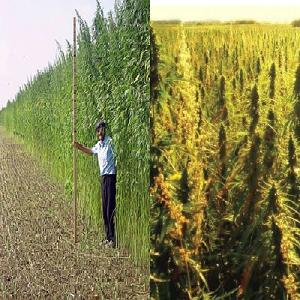For many people, hemp and marijuana are virtually synonymous with each other, and to some extent, they would be right. Although the two types of plants are used for very different purposes, they are remarkably similar in appearance and form. In fact, most novices – and even some experienced users – would probably have difficulty telling them apart.
The fact remains, however, that hemp is different from marijuana. Here are some of the most important aspects in which the two differ.
Genetics


THC content
For marijuana users, the most significant difference between cannabis and hemp is the almost total absence of THC content in the latter. THC or tetrahydrocannabinol is only one of the more than 60 cannabinoids that have so far been identified in marijuana, but it is perhaps the most important, and certainly the best known. Primarily responsible for the psychoactive effects of marijuana, THC is virtually absent in hemp. In fact, the THC content of a particular plant is often the main consideration when classifying it as hemp or marijuana. Hemp plants may contain only a maximum of 0.3% THC, while marijuana may contain anywhere from 5% to 20% THC.
Cultivation
Because hemp and marijuana are used for very different applications, the conditions under which they are grown differ considerably as well. When cultivating marijuana for medical or recreational purposes, the primary goal is to produce female plants that bear flowers sought after for their potency. Care is therefore taken so that male plants do not fertilize female plants and result in seed production instead of flowers.
With hemp production, the focus is on producing male pants without regard for flower production. In fact, hemp plants are bred selectively in order to produce tall and fast growing plants with very low THC content.
Legal status
Although it is legal to grow marijuana in many states that have passed medical and recreational marijuana legalization, cultivation of the plant remains illegal under federal law. In fact, both marijuana and hemp are classified in the Controlled Substances Act as Schedule I drugs.
However, hemp may be legally imported into the United States. In fact, as much as $500 million worth of hemp-related product are imported into the country annually.
Research
One other thing that marijuana and hemp have in common is the dearth of research opportunities involving them. Even with the limited research opportunities for both however, studies into the qualities of both remain quite different. While much of marijuana research involves finding new medical uses of the plant, hemp research is typically focused on finding new industrial uses for it.













